Inter-stellxr-blog - Lost Among The Stars
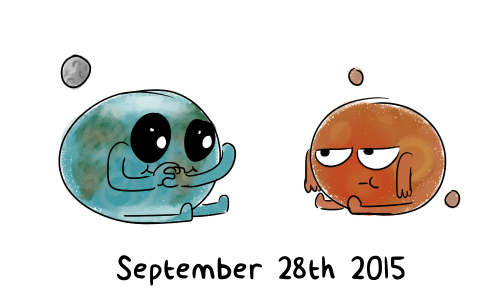
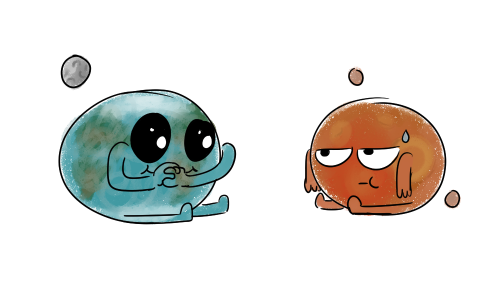
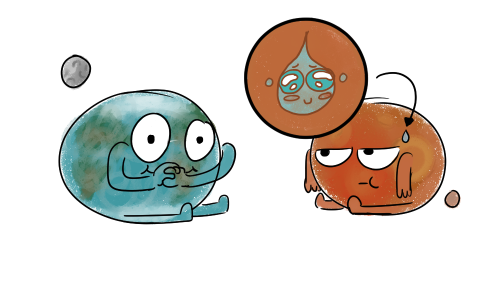


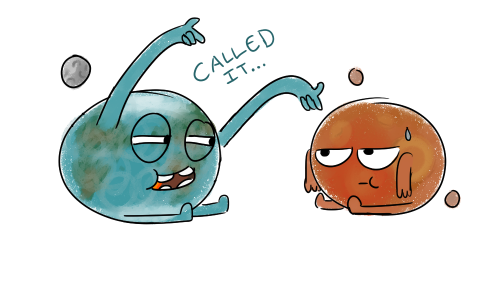
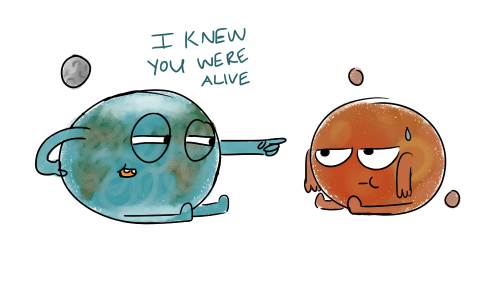
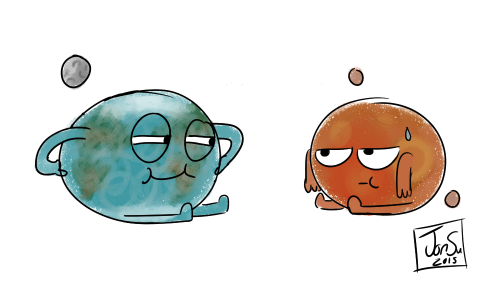
More Posts from Inter-stellxr-blog and Others

Curiosity moved approximately 8.0m ESE (119º) on Sol 1151. Quick stitch of the available end-of-drive Navcams. More info to follow
http://space-pics.tumblr.com/


Finally got around to watch BH6 and found another beloved character I adore way too much that [clenches fist] didn’t have enough screen time. TADASHI HAMADA ♥
Five Orion Technologies That Will Help Us Get Home From Mars
Orion is a key piece of NASA’s journey to Mars. The spacecraft, which was first tested in space last year, will enable crew to travel to deep space on the journey to the Red Planet and bring astronauts home safely. It’s a critical technology we’ll use to help NASA test, demonstrate and hone the skills and capabilities we need to operate farther and farther away from Earth.

Environmental Control and Life Support Systems
Water. Air. A temperate environment. A bathroom. These are some of the things astronauts need to survive the long journey back to Earth from Mars. NASA has developed an environmental control and life support system on the International Space Station and is designing such a system for Orion. The system can recycle carbon dioxide and make it back into useable air and process urine to make it into potable water, for example. Right now on the space station, engineers and astronauts are testing a filtering system for efficiency and reliability on long-duration missions. The investigation uses an amine-based chemical compound combined with the vacuum of space to filter and renew cabin air for breathing. When astronauts travel home from Mars, they won’t be able to count on the arrival of spare parts or extra supplies if something breaks or gets depleted, so engineers are hard at work developing reliable and robust technologies to keep crews alive and healthy in space.

Radiation protection
Astronauts traveling to and from Mars will be far away from the protective shield of Earth’s atmosphere and magnetic field, and their spacecraft and its systems will need to be able to protect against the full spectrum of space radiation. NASA is working now to develop protective methods.
Orion will use items already on board to protect the crew and create a temporary shelter in the aft bay of the spacecraft, which is the inside portion closest to the heat shield. This location minimizes the amount of equipment to move around while maximizing the amount of material that can be placed between the crew and the outside environment. The items that will be used include supplies, equipment and launch and re-entry seats as well as water and food. By using the items already on board, the astronauts benefit from additional shielding without adding to Orion’s mass.

Power and Propulsion
A spacecraft needs power and propulsion in space to refine its trajectory during the trip back to Earth. Orion will include a service module capable of helping the spacecraft make any necessary mid-course corrections. A service module provides power, heat rejection, in-space propulsion and water and air for crews, and NASA is working with ESA (European Space Agency) to provide Orion’s service module for its next mission in a partnership that will also bring international cooperation on the journey to Mars. The service module will provide propulsion, batteries and solar arrays to generate power and contain all the air, nitrogen and water for crews.
The ESA-provided element brings together new technology and lightweight materials while also taking advantage of spaceflight-proven hardware. For example, ESA is modeling several key components – like the solar arrays – from technology developed for its Automated Transfer Vehicle-series of cargo vessels, which delivered thousands of pounds of supplies to the space station during five missions between 2008 and 2015. NASA is providing ESA one of the Orbital Maneuvering System pods that allowed space shuttles to move in space to be upgraded and integrated into the service module.

Heat shield
When an uncrewed Orion was tested in space in 2014, the heat shield withstood temperatures of about 4,000 degrees Fahrenheit, or about twice as hot as molten lava. That heat was generated when the spacecraft, traveling at about 20,000 mph back toward our planet, made its way through Earth’s atmosphere, which acts as a braking mechanism to cause friction and slow down a returning spacecraft. Its speed was about 80 percent of what Orion will experience when it comes back from missions near the moon and will need to be even more robust for missions where return speeds, and therefore reentry temperatures, are higher.
Orion’s heat shield is built around a titanium skeleton and carbon fiber skin that provide structural support. A honeycomb structure fits over the skin with thousands of cells that are filled with a material called Avcoat. That layer is 1.6 inches at its thickest and erodes as Orion travels through Earth’s atmosphere.

Parachutes
A spacecraft bringing crews back to Earth after a long trip to Mars will need a parachute system to help it slow down from its high-speed reentry through the atmosphere to a relatively slow speed for splashdown in the ocean. While Earth’s atmosphere will initially slow Orion down from thousands of miles per hour to about 325 mph, its 11 parachutes will deploy in precise sequence to further slow the capsule’s descent. There are three forward bay cover parachutes that pull a protective cover off the top of the capsule, two drogue parachutes that deploy to stabilize the spacecraft, and three pilot parachutes that are used to pull out Orion’s three orange and white main parachutes that are charged with slowing the spacecraft to its final landing speed. The main parachutes are so big that the three of them together nearly cover an entire football field.
Engineers are currently building the Orion spacecraft that will launch on the world’s most powerful rocket, the Space Launch System, and will enable astronauts to travel farther into space than ever before on the journey to Mars.
Visit NASA on the Web for more information about Orion and NASA’s journey to Mars. http://www.nasa.gov/orion
It’s a U.S. Record! Cumulative Days in Space: 383

Today, Astronaut Scott Kelly has broken the record for longest time spent in space by a U.S. astronaut! Over the course of his four missions, Kelly has spent 383 cumulative days in space. This record was previously held by Astronaut Mike Fincke, with 382 days in space over three flights. Here are some more fun facts about this milestone:
4: The number of humans that have spent a year or more in orbit on a single mission
215 Days: The record currently held by Mike Lopez-Alegria for most time on a single spaceflight by U.S. astronaut. On Oct. 29, Kelly will break this record
377 Days: The current record for most days in space by a U.S. female astronaut, held by Peggy Whitson
879 Days: The record for most cumulative days in space by a human, currently held by Russian cosmonaut Gennady Padalka

Why Spend a Year in Space?
Kelly’s One-Year Mission is an important stepping stone on our journey to Mars and other deep space destinations. These investigations are expected to yield beneficial knowledge on the medical, psychological and biomedical challenges faced by astronauts during long-duration spaceflight.
Kelly is also involved in the Twins Study, which consists of ten separate investigations that are being conducted with his twin brother, who is on Earth. Since we are able to study two individuals who have the same genetics, but are in different environments for one year, we can gain a broader insight into the subtle effects and changes that may occur in spaceflight.
For regular updates on Kelly’s one-year mission aboard the space station, follow him on social media: Facebook, Twitter, Instagram.
Make sure to follow us on Tumblr for your regular dose of space: http://nasa.tumblr.com




Kennedy Space Center | by North Sky Photography
Facebook | Instagram | 500px | Tumblr | Society 6
You don't need piercings to be hot >^<

>/////< omg thank

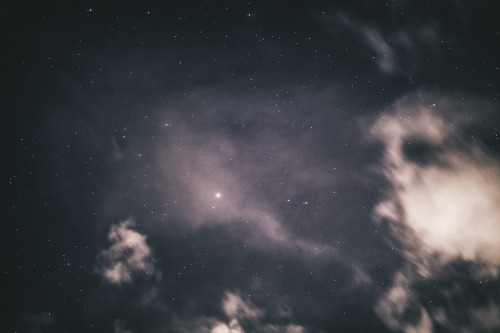



Tadashi was unaware of what Hiro was doing, since he had fallen back asleep in under five minutes. He couldn't feel any movement, though he would wake up to the slightest sounds. youneedsomeupgrades
hamada-tadashii
Hiro woke, rubbing his eyes and staring at the dark ceiling, slowly sitting up and dangling his feet off the bed. His eyes scanned the room searching for his sound asleep brother. As his eyes found him he tiredly stood out of bed and almost drunkly walked over to the bed, setting his hands on the bed, closing his eyes. “Dashi.. Tadashi, you awake?”
Hiro:... Hey tadashi.
Tadashi: yeah?
Hiro: is that a mirror in your pants?
Tadashi: what?
Hiro: cause i can see me in 'em.
Tadashi:...
Tadashi:...
Hiro: well?
Tadashi:... Get out.
-
 woodenactor liked this · 8 months ago
woodenactor liked this · 8 months ago -
 dennismcollage liked this · 1 year ago
dennismcollage liked this · 1 year ago -
 comtiqulbeschpi liked this · 1 year ago
comtiqulbeschpi liked this · 1 year ago -
 senpaisimmer liked this · 1 year ago
senpaisimmer liked this · 1 year ago -
 wilddergretna liked this · 1 year ago
wilddergretna liked this · 1 year ago -
 fitzz-siimmons liked this · 1 year ago
fitzz-siimmons liked this · 1 year ago -
 marleens-diary liked this · 1 year ago
marleens-diary liked this · 1 year ago -
 devileaterjaek liked this · 2 years ago
devileaterjaek liked this · 2 years ago -
 whimsicalwishes2010 reblogged this · 2 years ago
whimsicalwishes2010 reblogged this · 2 years ago -
 rusttycarrott liked this · 2 years ago
rusttycarrott liked this · 2 years ago -
 iwillhaveamoonbase liked this · 2 years ago
iwillhaveamoonbase liked this · 2 years ago -
 sugarbear2001 liked this · 2 years ago
sugarbear2001 liked this · 2 years ago -
 saratrofa liked this · 2 years ago
saratrofa liked this · 2 years ago -
 feeverdreeaam reblogged this · 2 years ago
feeverdreeaam reblogged this · 2 years ago
"I don't know who will read this. I guess someone will find it eventually. Maybe in a hundred years or so." -Mark Watney
174 posts
